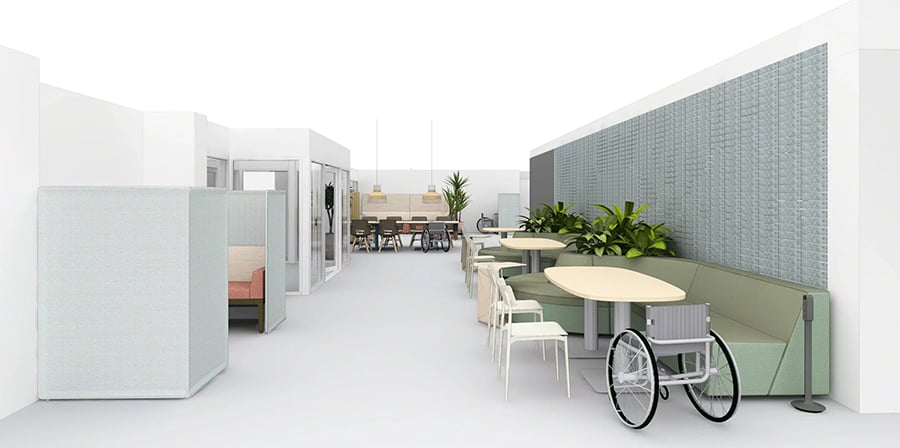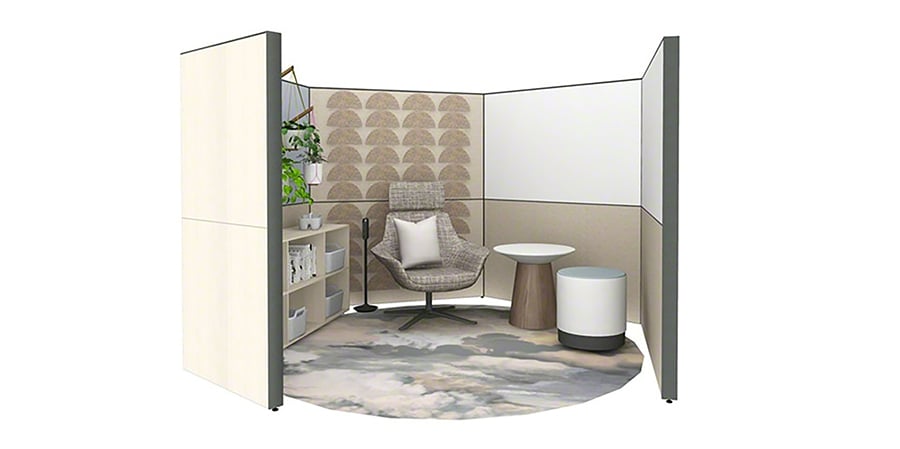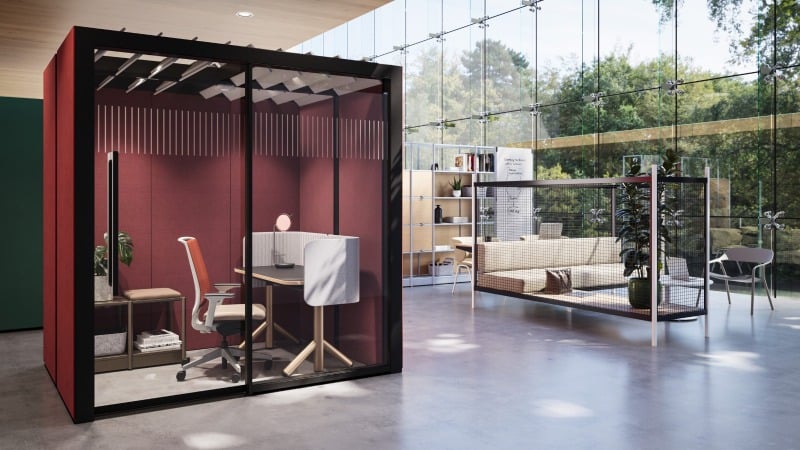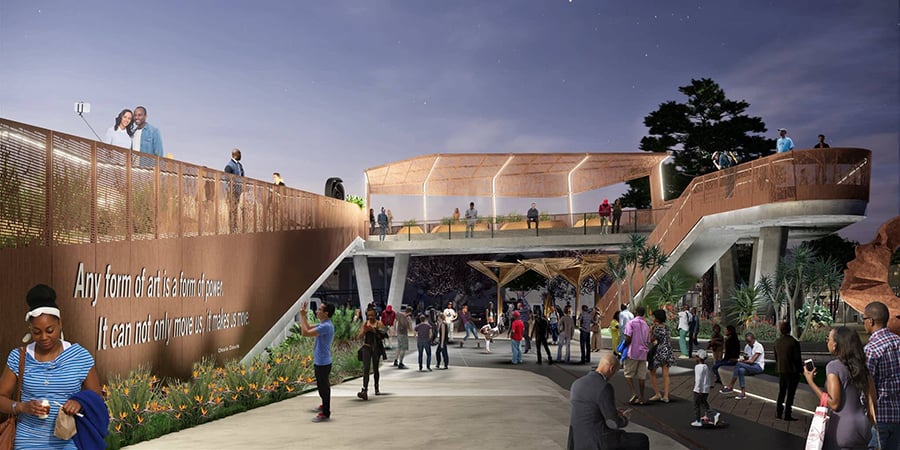Embracing DE&I (Diversity, Equity and Inclusion) in the workplace is not just a moral imperative but a business one. This blog post explores how business can turn the principles of DE&I into practical workplace designs.
What is DE&I in the workplace?
DE&I stands for Diversity, Equity, and Inclusion.
Diversity is about the representation of different identities and perspectives in your workplace
Equity is about ensuring fair treatment and equal access to opportunities for all employees
Inclusion is about creating a welcoming environment where diverse individuals are empowered
Why is DE&I a hot topic?
The UK population is increasingly diverse.
Over the last 20 years an ageing population, increased immigration, acceptance of alternative lifestyles and disabilities have all contributed to a rich blend of generations, ethnicities, religions, and cultures living and working side by side.
And it's this diversity that businesses are looking to reflect and encourage with their DE&I efforts.
At Ernst & Young, we believe that diverse perspectives, combined with an inclusive culture and equitable opportunities, drive better decision-making, stimulate innovation, increase organisational agility and strengthen resilience to disruption.
Ernst and Young, DE&I statement
How a diverse workforce drives innovation
Only a workforce made up of different ages, cultures and orientations can properly reflect the diversity of customers they serve. Together they can ensure products and services are built that answer the needs of changing, underserved and lucrative market segments.
By widening the recruitment pool, employers can tap talent that brings new perspectives to a business.
Inclusive companies are primed for growth
Research shows that companies who are inclusive in their employment practices, are more likely to be creative, profitable and primed for growth.
- Diverse companies are 70% more likely to capture new markets. (HBR)
- Diverse teams are 87% better at making decisions. (People Management)
- Diverse management teams lead to 19% higher revenue. (BCG)
- Diverse corporations are 35% more likely to outperform their competitors (McKinsey)
Inclusive teams need inclusive design.
But building more diversity in your teams means creating workspaces that can support a diversity of needs.
It means creating workplaces that foster a sense of belonging, acceptance and shared purpose - while at the same time galvanising collective work and achievement.
“The work we do in Diversity, Equity and Inclusion is about creating an environment where everyone feels they belong, where rocking our difference is valued, celebrated and encouraged. It’s about consciously shaping our systems, structures and behaviours so everyone at Novartis has what they need to thrive.”
Hannah Perry, Chief Diversity & Culture Officer, Novartis
How to support diversity in workplace design
Inclusive workplace design is not about making environments fit the needs of specific users but creating spaces where everyone can participate equally in their everyday roles regardless of gender, race, disability or neurodiversity.
Ensure accessibility for all
Environments that favour one set of needs over another can make them unwelcoming and unworkable for many. The ultimate 'destination office' is capable of supporting everyone and encouraging all to use it effectively.
Accessibility is very foundational to inclusive design. It is a human right, and everyone deserves to be seen, heard, valued, and appreciated with dignity and brought into spaces where you don’t need to mask who you are.
Kamara Sudberry, Global Leader, Inclusive Design | Workplace Innovation, Steelcase
Inclusive design promotes integration rather than segregation. It seeks to ditch the unconscious bias of everyday design.
A study by the Partnership on Employment & Accessible Technology (PEAT) revealed that 46% of employees with disabilities face challenges with workplace technology that isn't designed with accessibility in mind.
Think carefully about how your working environment can be made accessible for all and how it can seamlessly adapt to a range of needs.
- Physical Accessibility: Ensure that the office layout is wheelchair accessible, with ramps, wide doorways, and accessible restrooms

- Sensory Considerations: Incorporate design elements that cater to employees with sensory disabilities, such as tactile pathways for the visually impaired or soundproof rooms or pods for those with auditory sensitivities.

- Accessible technology: Ensure software and hardware are accessible for workers with physical disabilities and neurodiverse needs.
- Flexible Workspaces: Choose adjustable desks and seating arrangements to accommodate various physical needs and preferences. But agile furnishing must be light and portable if it's going to be moved and reconfigured by people with different physical capabilities.
Ensure gender and culturally-inclusive amenities.
Inclusive employers create supportive and accepting environments where everyone feels comfortable.
Gender-inclusive bathrooms?
This topic is something of a political hot potato right now, but studies from America are showing how gender-neutral bathroom design is about more than identity politics.
“From those who may require the assistance of a caregiver of a different gender, to those who experience body image issues and are seeking more individual privacy – thoughtfully designed gender-inclusive facilities have emerged as supportive of the entire community.”
Design guidelines for inclusive bathrooms and locker rooms demonstrate how privacy and comfort for all can be enhanced by more sensitive handling of shared space.
Lactation Rooms
Is your workplace set up to support people of all life stages? Consider offering private spaces for nursing mothers who may be using creche facilities close by.
Prayer and Meditation Rooms
Designate quiet spaces where employees can practice their religious or spiritual rituals. For inspiration, take a look at Insightful Environments' guide to creating multi-faith rooms.
"It’s important for designers to recognize that it’s a failure if we don’t become culturally competent in our designs and reflect what our constituents need. It’s not about how many chairs are in the room or the color on the wall; it’s about how the space feels and if it feels inclusive"
Gabrielle Bullock, Director of Global Diversity, Perkins&Will
Create collaborative and inclusive workspaces
How can we break down silos and hierarchical barriers in our organisations? How can we ensure that we are all genuinely 'working together' and letting everyone participate equally?
Open floor plans
Encourage collaboration and communication among employees from different departments and hierarchies. Create 'third spaces' where informal meetings can take place.
Diverse meeting spaces
Offer a variety of meeting spaces, from formal conference rooms to casual lounge areas to cater to different working styles and preferences. Think about using pods and cubicles to provide a range of spaces within an open space.

Technology integration
Equip spaces with technology to facilitate remote participation, ensuring inclusivity for off-site employees. Don't let the way you operate exclude those balancing child care through hybrid work.
Temperature and lighting control
Ensure personal workspaces can be controlled for heat, noise, light and ventilation. Menopausal women, in particular, suffer when they cannot control the ventilation of their workspace, neurodivergent people can struggle with excessive odours, harsh lighting and distracting sound.
Art and decor that reflect diversity
What assumptions and expectations about the make-up of your workforce are you signalling unconsciously through your design and decor? Could focusing on a new kind of design promote a more outward-looking organisation?
Choose inclusive decor and artwork
Celebrate diversity and cultural differences in the makeup of your workforce.
Display artwork from diverse artists and cultures, reflecting a more eclectic outlook.

Think about crowd-sourcing design elements from your team to fold into your overall corporate look and feel.
Conclusion
Designing for diversity and inclusivity is not about paying lip service to political correctness. It is about enabling your business to thrive in a world where changing demographics and values demand a different approach.
The idea of inclusivity is related to the idea of taking care of and connecting with others. The future of design is about putting relationships at the center of the design process. It’s a new paradigm in which we no longer start with the user, but with the relationship. We are all interdependent and have a lot to learn from each other.
Francesco Zurlo, Dean, Politecnico di Milano School of Design








